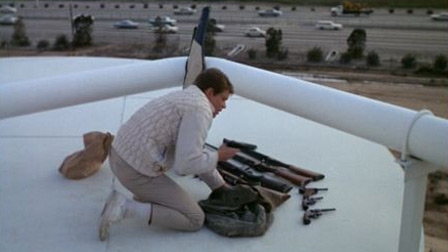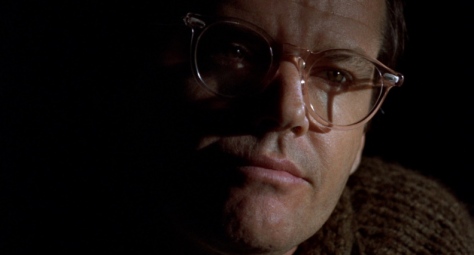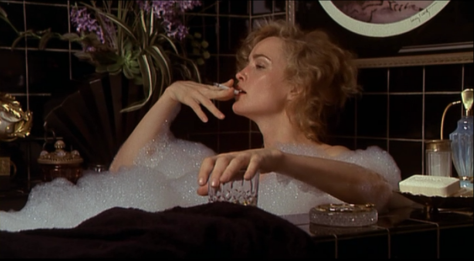By Dennis Hartley
(Originally posted on Digby’s Hullabaloo on June 6, 2009)

…nor can any be replaced.
I was sad to hear about David Carradine’s passing . He may not have always been discriminating in his choice of roles (like Michael Caine, it seemed that he never met a script that he didn’t like) but he had a unique screen presence, and with well over 100 films to his credit over a 46-year career, was obviously dedicated to his craft.
According to the Internet Movie Database, there were six films in post-production and one in pre-production at the time of his death. He’s even in a SIFF film (screening next week) called My Suicide (I know what you’re thinking…but we still don’t know for sure at the time of this writing, so let’s not go there).
I don’t think I’ve met anyone in my age group who doesn’t have a certain nostalgic affection for Carradine via the character he created in the TV series Kung Fu (which I’m pretty sure was your average ‘murcan teevee watcher’s first exposure to Zen philosophy). Here’s a few film recommendations:

Box Car Bertha-This 1972 Bonnie and Clyde knockoff (produced on the cheap for Roger Corman’s American International Pictures) was the launching pad for a fledgling director named Martin Scorsese. It is also one of the 4 films in which Carradine co-starred with Barbara Hershey (the two had a longtime off-screen romantic partnership as well). Carradine also landed a small part in Scorsese’s breakout film, Mean Streets.

Americana– David Carradine and Barabara Hershey star in this unique, no-budget 1973 character study (released in 1981). Carradine, who also directed and co-produced, plays a Vietnam vet who drifts into a small Kansas town, and for his own enigmatic reasons, decides to restore an abandoned merry-go-round. The reaction from the clannish townsfolk ranges from bemused to spiteful. It’s part Rambo, part Billy Jack (although nowhere near as violent), and a genre curio in the sense that none of the violence depicted is perpetrated by its war-damaged protagonist. Carradine also composed and performed the song that plays in the closing credits. It’s worth noting that Americana predates Deer Hunter and Coming Home, which are generally considered the “first” narrative films to deal with Vietnam vets.

Death Race 2000– At first glance, Paul Bartel’s film about a futuristic gladiatorial cross-country auto race in which drivers score extra points for running down pedestrians is an outrageous, gross-out cult comedy. It could also be viewed as a takeoff on Rollerball, as a broad political satire, or perhaps a wry comment on that great, timeless American tradition of watching televised blood sport for entertainment. One thing I’ll say about this movie-it’s never boring! Carradine is a riot as the defending race champ, “Frankenstein”.

Bound For Glory-You can almost taste the dust in director Hal Ashby’s leisurely, episodic 1976 biopic about the life of Depression era songwriter/social activist Woody Guthrie. Carradine (as Guthrie) gives his finest performance, and does a very credible job with his own singing and playing (music was his first love).

The Long Riders-An underappreciated western from action film maestro Walter Hill. One of the more entertaining renditions of the oft-filmed tale of Jesse James and his gang, largely due to the stunt casting. Three sets of well-known acting siblings (the brothers Keach, Quaid and Carradine) portray three sets of legendary outlaw siblings (the brothers James, Miller and Younger, respectively).

Q, The Winged Serpent–I know this darkly comic horror flick from psychotronic writer-director Larry Cohen isn’t going to be everyone’s cup of tea, but it actually contains one of my favorite Carradine performances. He plays a New York police investigator looking for the nest of a flying lizard randomly terrorizing the city. Michael Moriarty (a demented performance) is the star, but Carradine’s straight-faced character gets to deliver some wry lines; in fact I think he displays his knack for subtle comedy throughout the whole film. Also look for Richard Roundtree and Candy Clark.

Kill Bill, Vol 1 / Kill Bill Vol 2-Ever since Jules told Vincent (in Pulp Fiction) that his “retirement” plans were to “…just walk the Earth. You know, like Caine in Kung Fu…” you knew at some point, Quentin Tarantino and David Carradine were going to work together. It took 10 years, but it landed Carradine one of his most plum late-career roles, as the bad, bad, man at the top of Uma Thurman’s hit list.






























